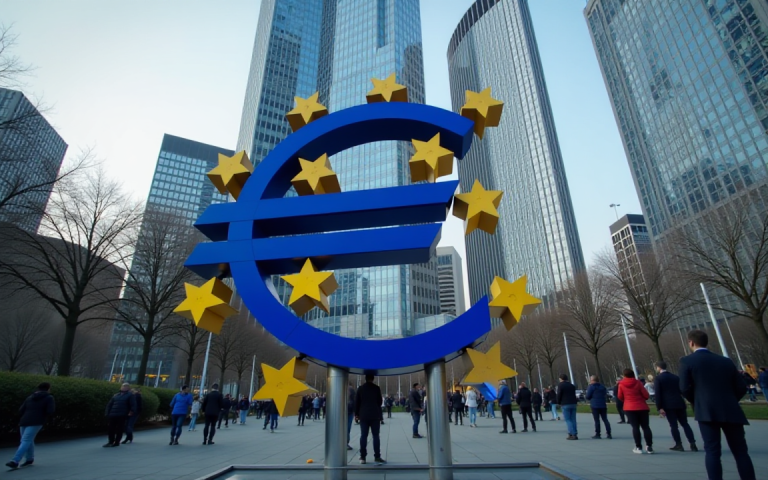Euro zone inflation returned to the European Central Bank’s target of 2% in June, marking a key milestone in the region’s battle against surging consumer prices.
The reading, released by Eurostat on Tuesday as part of its flash estimate, confirmed expectations from economists and signalled further easing pressure on the ECB to tighten policy.
This stabilisation comes after a sharp peak of 10% in 2022, largely driven by energy shocks and post-pandemic disruptions.
With inflation now at the central bank’s benchmark, focus is shifting towards rate guidance in the second half of the year.
Services inflation remains sticky at 3.3%
While headline inflation aligned with the ECB’s goal, underlying price pressures remain, particularly in the services sector.
Core inflation, which strips out volatile components such as energy, food, alcohol, and tobacco, stayed flat at 2.3% in June.
More notably, services inflation in the euro area picked up to 3.3%, up from 3.2% in May, suggesting persistent wage-driven pressures in domestic sectors.
This uptick has attracted the attention of policymakers, especially as services account for a significant portion of the euro zone’s economic activity. In April, services inflation had hit 4%.
While the recent easing from April highs reflects progress, the June rise highlights the delicate balancing act ahead for the ECB, which must weigh sticky core components against overall inflation improvements.
Country-level prints show mixed inflation trends
Inflation data released by major euro zone economies over the past week revealed a mixed picture.
Germany saw harmonised inflation decline, while France and Spain reported slight increases. Italy’s reading remained unchanged from the previous month.
This country-level divergence is adding complexity to the euro area’s aggregate inflation path.
The ECB typically places significant emphasis on harmonised index trends, and these national figures likely influenced the modest 0.1% rise from May’s 1.9% euro zone figure.
Despite varying domestic inflationary pressures, the aggregate stabilisation has reinforced speculation that the ECB will leave interest rates unchanged at its July meeting.
ECB expected to hold in July, cut in September
The latest data has fuelled expectations that the ECB will maintain its key interest rate, the deposit facility rate, at 2% during its July meeting.
A final 25-basis-point cut is being widely anticipated for September, barring any major economic shocks.
Market reaction was swift, with the euro gaining around 0.3% against the dollar following the data release.
In an interview with CNBC from the ECB Forum in Sintra, Portugal, the central bank’s Chief Economist Philip Lane noted that the disinflationary cycle, which began after inflation peaked at 10%, may be complete.
However, he also cautioned that the ECB must remain vigilant and data-dependent, prepared to act should inflation veer off course again.
Lane stressed that isolated spikes will not trigger immediate responses, indicating a more measured approach in future rate decisions.
Risks still linger despite downward trend
Despite recent progress, economists warn that the euro zone’s disinflationary path could still be disrupted by external shocks.
Persistently high services inflation, ongoing conflict in the Middle East, oil price volatility, and potential trade policy changes from the United States were all cited as variables that could influence future inflation outcomes.
The ECB’s forward guidance remains contingent on such risks not materialising.
Should current trends continue uninterrupted, economists believe the bank is on course for a cautious pause in July, followed by a rate reduction in September as part of its broader effort to support the euro area’s recovery without reigniting inflation.
The post Euro zone inflation hits 2% in June, prompting rate pause forecasts appeared first on Invezz

